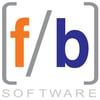In a global economy companies need to navigate different standards across borders and that can be tricky in the food and beverage industry where there are significant differences between Europe and the United States.
“If you’re a food and beverage supplier looking to sell in European countries and/or the United States, it is essential to understand the significant differences between the requirements and standards for additives, ingredients, and labels,” wrote Noni Weigand for RangeMe.
Who Sets the U.S. and EU Food Safety Standards?
The standards between the U.S. and European Union (EU) are different with separate authorities in charge.
In the U.S., the Food and Drug Administration (FDA), along with the United States Department of Agriculture (USDA), through its Food Safety Inspection Service (FSIS), are in charge of keeping the nation’s food supply safe.
In the EU, member countries have their own distinct food safety systems, but the EU as a whole operates under The General Food Law regulation.
“A series of food incidents in the late 1990s drew attention to the need to establish general principles and requirements concerning food and feed law at Union level. Accordingly, the European Commission developed an integrated approach to food safety 'from farm to fork', primarily set out in its White Paper on Food Safety. It covers all sectors of the food chain, including feed production, primary production, food processing, storage, transport and retail sale,” says the EU.
Europe Stricter on Food Additives than U.S.
Europe takes a more proactive approach to regulating food additives than the U.S. which takes a more reactive stance.
“Only additives proven to be non-harmful are approved for use in Europe,” wrote Weigand.
Some of the different standards between Europe and U.S. include:
- Food additives are listed on U.S. labels by their full name
- Food additives are listed on European labels by their “E number” – a 3 or 4-digit code assigned to common additives
Some Ingredients Allowed in U.S. but Banned in Europe
Many food manufacturers must adjust their ingredients depending on which market they are releasing their products in.
“Certain ingredients that are illegal in Europe are still allowed, and commonly used, in the United States,” writes Weigand.
Among the ingredients banned in certain European countries or across the entire EU but allowed in the U.S.:
- Azodicarbonamide: This chemical substance is used as a whitening agent in cereal flour and as a dough conditioner in bread baking. It can be found in packaged baked goods, frozen dinners, and pasta mix.
- BHA and BHT: These closely related chemicals are commonly used as preservatives in food such as gum, cereal, butter, beer, and vegetable oil.
- Brominated vegetable Oil (BVO): This synthetic chemical, found in sports drinks and sodas, BVO keeps flavor (or oil) from floating to the surface.
- Coloring Agents (Red #40, Yellow #6, Blue #1): These coloring agents can be found in many popular foods from candy to soda to cake mixes.
- Olestra: This fat substitute, accidentally discovered by Procter & Gamble researchers in 1968, is found in products such as fat-free potato chips.
- Potassium bromate (bromated flour): This oxidizing agent makes bread whiter and fluffier. It can be found in hot and hamburger buns and other packaged baked goods.
- rBGH (rBST): Recombinant bovine growth hormone is a synthetic hormone used by dairy farmers to boost milk production. It can be found in milk and yogurt products.
- Ractopamine: This animal feed additive used to promote leanness and increase food conversion efficiency in farmed animals. It can be found in pork, beef, and turkey.
Major Food Allergies Rules Differ Between U.S. and EU
Congress passed the Food Allergen Labeling and Consumer Protection Act of 2004 (FALCPA) which identified eight foods as major food allergens:
- Milk
- Eggs
- Fish
- Shellfish
- Tree nuts
- Peanuts
- Wheat
- Soybean
“At the time of FALCPA’s passage, the eight major allergens accounted for 90 percent of food allergies and serious allergic reactions in the U.S. FALCPA requires that foods or ingredients that contain a "major food allergen" be specifically labeled with the name of the allergen source,” says the (FDA).
Sesame will become the ninth allergen that needs to be declared in the U.S. starting Jan. 1, 2023, due to the Food Allergy Safety, Treatment, Education, and Research (FASTER) Act.
In the EU, there are 14 allergens that must be declared:
- Celery
- Cereals containing gluten
- Crustaceans
- Eggs
- Fish
- Lupin
- Milk
- Mollusks
- Mustard
- Peanuts
- Sesame
- Soybeans
- Sulphur dioxide and sulphites
- Tree nuts
U.S. Can Take a More Regulatory Approach than EU
In some regards, the U.S. food safety regulatory approach can lead to tougher standards.
“The notion that the USA has poor food standards is in truth inaccurate, with the USA’s food standards requiring actions to be taken, rather than, for example, those of the European Union, which simply require manufacturers to ‘prove they have done their best’,” wrote David Soffer for TechRound.
The FDA routinely inspects food facilities and collects samples.
The 2015 FDA Food Safety Modernization Act (FSMA) establishes that “FDA-regulated food facilities have a legally enforceable responsibility to prevent contamination by identifying risks, taking actions to minimize them, and putting procedures in place to monitor hazards and update practices when necessary. And if contamination of a ready-to-eat food such as ice cream is likely, the rule also calls for companies to test the facility environment for pathogens or related bacterial species that can indicate their presence.”





